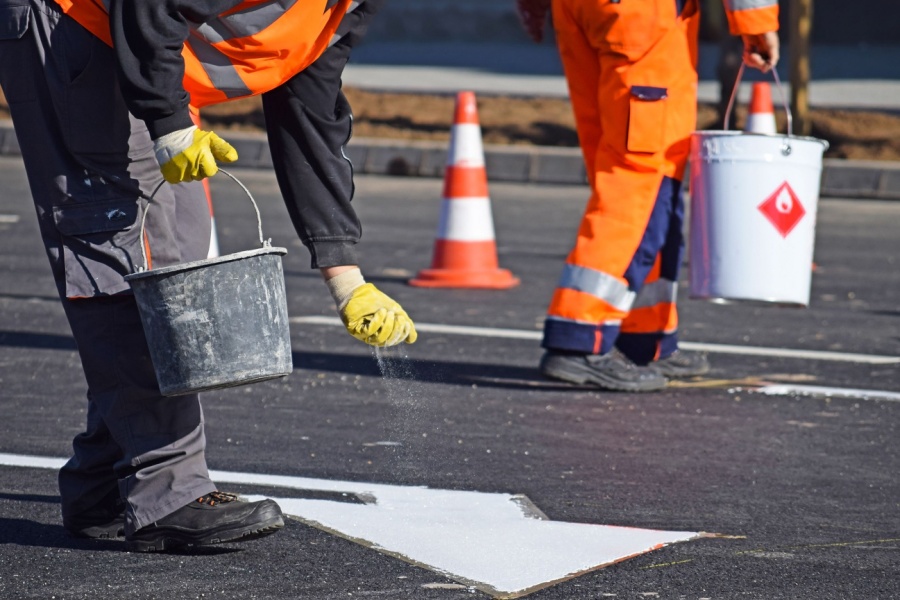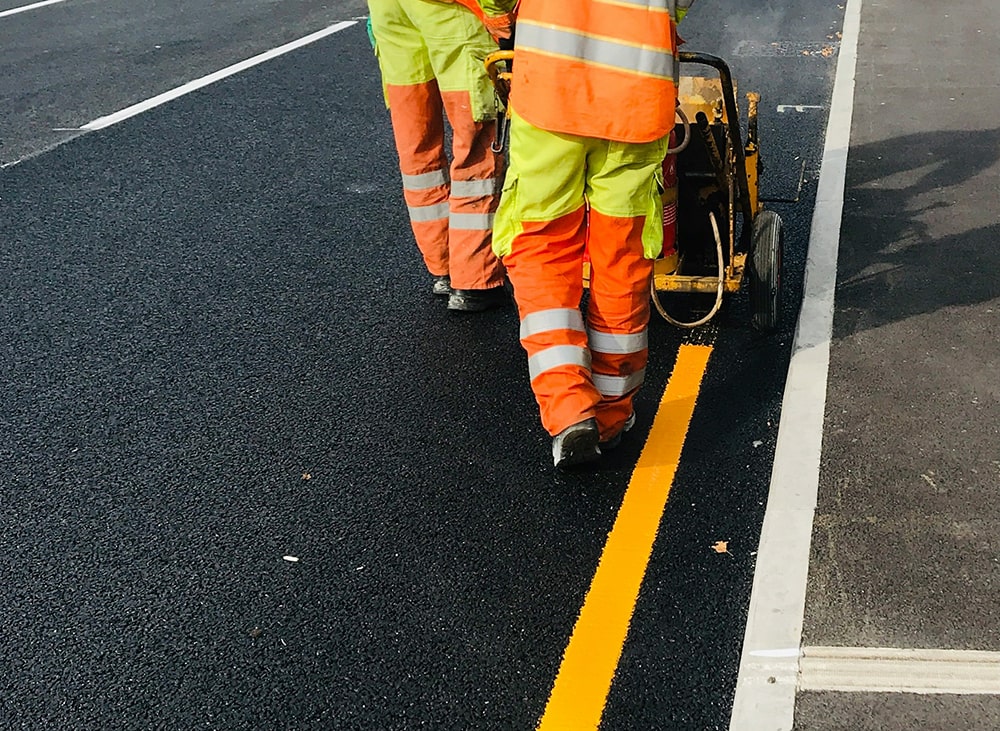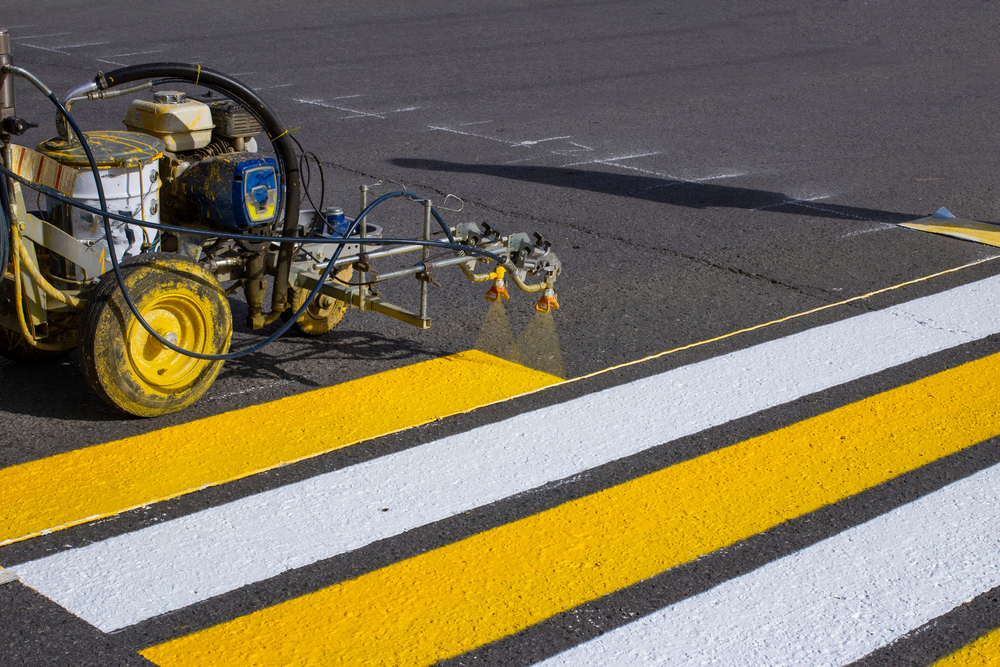Properly applied road markings do more than just direct cars. They help prevent accidents, keep traffic organized, and make roads safer for everyone. If you’re preparing for a road project, it pays to know what professional road marking services involve so you can make confident decisions and get results that last.
Key Takeaways
- Durability and Safety: Professional road marking gives you clear, lasting lines that stay visible and help keep both drivers and pedestrians protected.
- Systematic Process: From the first site check to the final walkthrough, every stage is carefully planned and executed with precision.
- Long-Term Value: Hiring experts isn’t just about getting the job done right the first time. It also means fewer repaints, lower maintenance costs, and peace of mind that your project meets safety and regulatory standards.
Road markings are easy to overlook, but they are among the most important elements of road safety and traffic management. Each line forms part of a system that directs movement, reduces confusion, and protects both motorists and pedestrians.
But these road markings don’t appear out of nowhere. Creating them requires a specific process that involves the right materials, proper equipment, and skilled workmanship.
This is where professional road paint application services make the difference. They ensure results that are clear, precise, and built to last.

Why Professional Road Marking Matters
When professionals apply road paint markings, they make sure that each line makes roads more efficient. The materials they use also ensure the longevity of the markings, reducing the need for constant upkeep.
Working with professionals guarantees the following:
- Safety: Professionals create crisp, reflective lines that reduce confusion for drivers and pedestrians.
- Compliance: Standards from DPWH and international road safety bodies are followed.
- Durability: High-grade materials withstand traffic and climate conditions.
- Efficiency: Expert planning minimizes disruption and speeds up project completion.
Professional Road Marking Services Are Done
Initial Site Assessment
Every successful road marking project starts with a close look at the site itself. Before any lines are drawn, a professional team inspects the area to evaluate key factors that affect the outcome.
- Surface Type Assessment: Asphalt may bond better with thermoplastics, while concrete might require extra surface preparation.
- Traffic Analysis: Highways and busy roads require more durable materials like thermoplastic. Meanwhile, low-traffic areas can be marked using traditional road paints.
- Environmental Conditions: Heat, humidity, and moisture affect how well materials cure and how long they last.
This site assessment helps the contractor choose the most appropriate materials and methods for long-term performance. Skipping it often leads to poor adhesion, faster fading, and early failure.
Planning and Layout Design
Planning involves mapping out exactly where markings should go, with compliance and efficiency in mind.
- Precise Measurements: Each lane width, pedestrian crossing, and directional arrow is measured to the centimeter.
- Accessibility Compliance: Parking areas must include designated PWD spaces, ramps, and accessible pathways.
- Regulatory Alignment: Layouts must follow DPWH specifications and international traffic guidelines.
At this stage, project managers also collaborate with clients to address special needs, such as branded stenciling or color-coded areas.
Surface Preparation
Surface prep can make or break the entire project. No matter how high-quality the paint is, it won’t hold up on a dirty or damaged road. Before any markings go down, professionals make sure the surface is clean, stable, and ready to bond properly.
Here are the steps for surface preparation:
- Cleaning and Debris Removal: Power washing or sweeping removes dirt, oil, and grease.
- Surface Repairs: Filling cracks and potholes prevents premature wear.
- Moisture Control: Surfaces are tested for dryness, as water can prevent proper adhesion.
Some projects also require grinding or sandblasting to remove old, faded markings before applying new ones.

Application of Road Markings
This is where expertise meets technology. Depending on the requirements, line marking services contractors use specialized machinery and materials to apply:
- Thermoplastic Application: Thermoplastics are applied hot and create thick, durable, and reflective markings. It is deal for highways and pedestrian crossings.
- Traditional Paint: Solvent-based or waterborne paints, often machine-sprayed for even coverage, are common for parking areas and lighter-traffic zones.
- Cold-Applied Plastics (CAP): Applied without heat, CAPs are highly durable, skid-resistant, and used in specialized areas.
Professional line marking service providers also use precision-controlled applicators to ensure straight lines, consistent thickness, and uniform color.
Reflective Beads Application
Reflective glass beads are often used to make road markings more visible at night. For some materials, the beads are already mixed in. For others, they’re dropped onto the wet paint during application. Either way, the beads reflect headlights and help drivers see the lines clearly in low-light conditions.
Drying and Curing
Proper curing ensures road markings adhere securely and last longer. Contractors manage this by:
- Blocking access until markings are fully set.
- Using quick-dry materials in busy areas.
- Monitoring curing conditions to prevent cracking or peeling.
Final Inspection
Before project handover, contractors conduct thorough checks.
- Line Consistency: Ensures road markings are sharp and uniform.
- Reflectivity Testing: Verifies safety under night conditions.
- Regulatory Compliance: Confirms adherence to DPWH or local requirements.
Only after passing these checks is the site opened to traffic.
Benefits of Hiring Professional Road Marking Services
Working with professionals may seem like a bigger upfront investment, but the long-term value is undeniable. Choosing professional road line marking services provides you with the following benefits:
- Longevity: Professional techniques and premium materials extend the life of markings.
- Safety: Highly visible, skid-resistant, and reflective markings reduce accidents.
- Efficiency: Projects are completed faster with minimal disruption to traffic.
Knowing your project complies with legal standards and will not need expensive rework also provides you with peace of mind. With all these benefits, paying a professional for the job outweighs the cost.

What Clients Should Prepare
Clients can also help ensure smooth execution by preparing before the project begins.
- Clear Site Access: All vehicles, debris, or obstacles should be removed.
- Traffic Management Support: Barriers or rerouting plans should be in place to manage road users during marking.
- Special Requirements: Communicate branding, stenciling, or non-standard requests early.
Taking these steps prevents delays and ensures the contractor can work efficiently.
Choosing the Right Road Marking Partner
Not all providers deliver the same quality. The right partner can mean the difference between markings that last years and those that fade in months, so make sure to consider the following when weighing your options:
- Experience: A proven track record shows expertise in handling diverse projects.
- Material Quality: Providers should use high-grade paints, thermoplastics, and beads.
- Technology and Equipment: Precision machinery ensures accuracy and consistency.
Rua Seguridad’s Professional Line Marking Services
For Rua Seguridad, road markings are more than compliance. They are about saving lives.
With a full range of road marking products and services, we help create safer, more efficient roads across the Philippines. Our clients trust us because we provide:
- High-Quality Materials: Formulated to withstand Philippine traffic and climate.
- Expert Application: Skilled teams with advanced machinery.
- Full Compliance: Strict adherence to DPWH and international standards.
- Long-Term Value: Durable solutions that lower repainting costs and downtime.
From highways and airports to schools and commercial spaces, Rua Seguridad delivers safety and reliability every step of the way.
Trust the Road Marking Experts
Professional road marking is a precise process that requires expertise, planning, and the right tools. From initial assessment to final inspection, each stage contributes to creating markings that are safe, durable, and compliant.
By partnering with experts like Rua Seguridad, you ensure more than just visible lines. You invest in safer communities, cost efficiency, and long-term performance.
Ready to take the next step? Contact Rua Seguridad today for a professional consultation and discover how our road marking solutions can make your project safer and more efficient.

FAQ
How long do professional road markings last?
Depending on traffic volume and weather, markings can last 1–5 years. Thermoplastic markings often last longer than traditional paints.
What type of paint is best for road markings?
Thermoplastic is the standard for high-traffic roads, while solvent-based paints are suitable for car parks or less demanding applications. Cold-applied plastics offer a premium, skid-resistant option.
Can road marking be done during the rainy season?
It is not recommended. Wet surfaces prevent proper adhesion, leading to premature failures. Professionals typically schedule during dry conditions for best results.
How soon can roads be used after markings are applied?
It depends on the material. Some paints dry in minutes, while thermoplastic requires a curing period. Contractors usually provide timelines to minimize disruption.
Why should I hire professionals instead of handling it in-house?
Professional road marking services ensure compliance, safety, and durability. In-house attempts often lack the right materials, equipment, and expertise, resulting in markings that fade or fail quickly.



